Mastering Halibut Cooking: Best Methods, Tips, and Expert FAQs
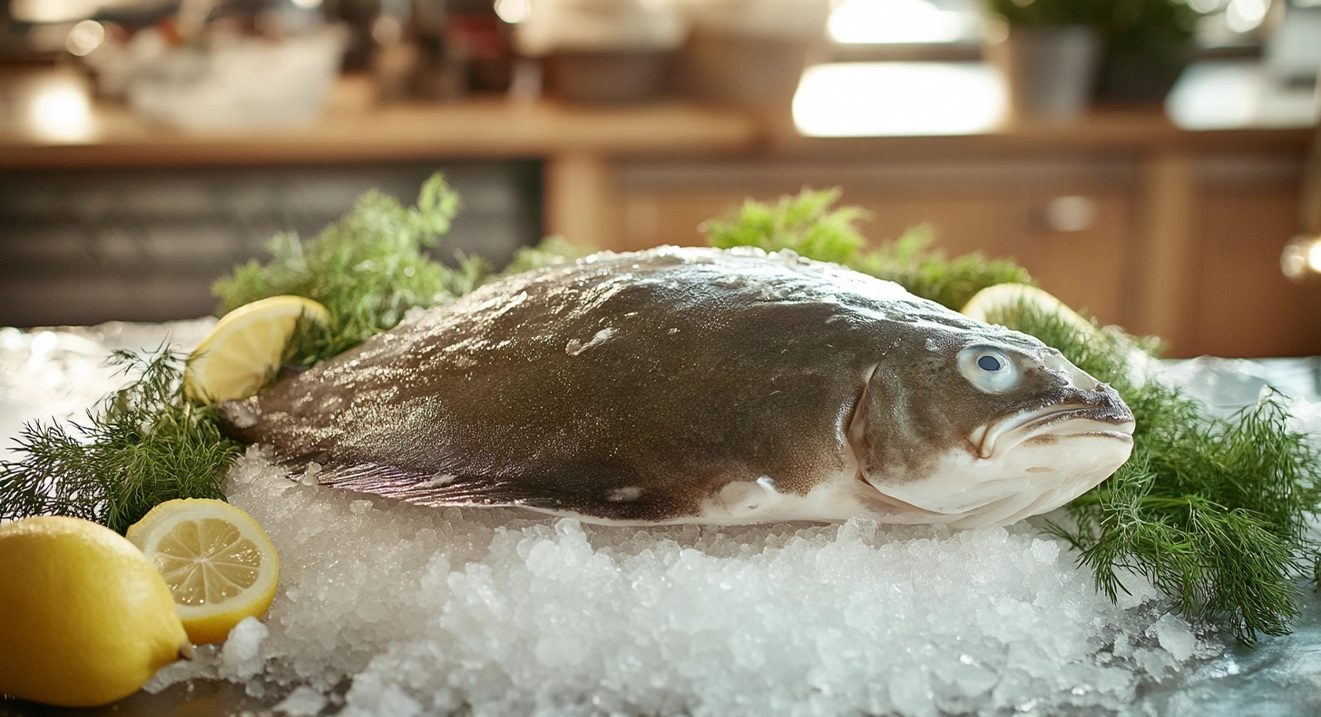
Understanding Halibut as a Fish
To understand how to cook a Halibut, halibut is a prized flatfish from the flounder family, is known for its versatility and mild flavor, making it a favorite in many cuisines. Found primarily in the cold waters of the North Atlantic and North Pacific, halibut is one of the largest flatfish species, with some individuals growing to impressive sizes. Its popularity stems from not only its taste but also its nutritional benefits.
Nutritional Profile of Halibut
Halibut is a nutrient-dense fish that offers a wealth of health benefits. It is an excellent source of high-quality protein for muscle repair and overall body function. Additionally, it is rich in omega-3 fatty acids, which support heart and brain health. Halibut also provides a range of vitamins and minerals, including:
- Vitamin D: Supports bone health and immune function.
- Vitamin B12: Aids in energy production and neurological health.
- Selenium: Acts as a powerful antioxidant to protect cells.
- Magnesium and Potassium: Essential for cardiovascular health and muscle function.
With a relatively low calorie and fat content, halibut is an excellent choice for those seeking a lean protein source.
Common Types of Halibut
The two main types of halibut found in markets are:
- Pacific Halibut: The most common variety is native to the North Pacific Ocean. It has a slightly firmer texture and a cleaner flavor, making it ideal for grilling or pan-searing.
- Atlantic Halibut: Found in the North Atlantic Ocean, this type is less abundant due to conservation efforts. It tastes similar to its Pacific counterpart but may be slightly softer in texture.
Flavor and Texture Profile
Halibut’s mild and sweet flavor makes it a versatile base for various seasonings and cooking methods. Its flesh is firm, flaky, and lean, holding up well to grilling, baking, and frying. The texture and neutral taste make halibut an excellent canvas for bold sauces, spices, and marinades. Its adaptability allows it to pair beautifully with fresh herbs, citrus, and buttery flavors, enhancing its natural appeal.
Popular Cooking Methods for Halibut
Halibut’s firm texture and mild flavor make it an incredibly versatile fish for a variety of cooking methods. Whether you’re aiming for a quick meal or a gourmet dish, halibut can be prepared in ways that highlight its delicate qualities. Below are some popular methods to cook halibut to perfection.
Pan-Seared Halibut
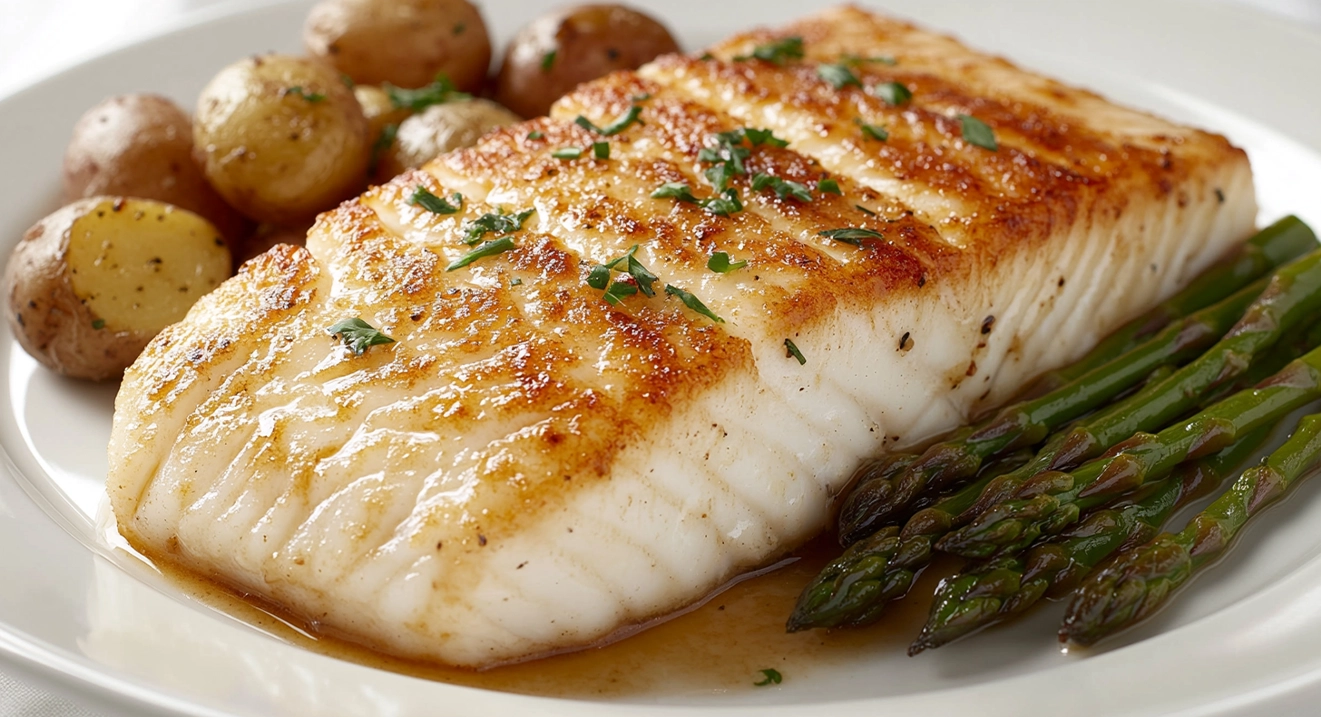
Pan-searing halibut is a simp
le yet elegant way to prepare this Fish. The method creates a golden, crispy crust while moistening the interior.
Steps:
- Season the halibut fillet with salt, pepper, and optional spices or herbs.
- Heat a skillet with a small amount of oil or butter over medium-high heat.
- Place the fillet skin-side in the hot pan and cook for 3–4 minutes until the bottom is golden.
- Flip the fillet and cook for 3–4 minutes or until it flakes easily with a fork.
This method pairs well with a drizzle of lemon juice or a light herb sauce.
Grilled Halibut
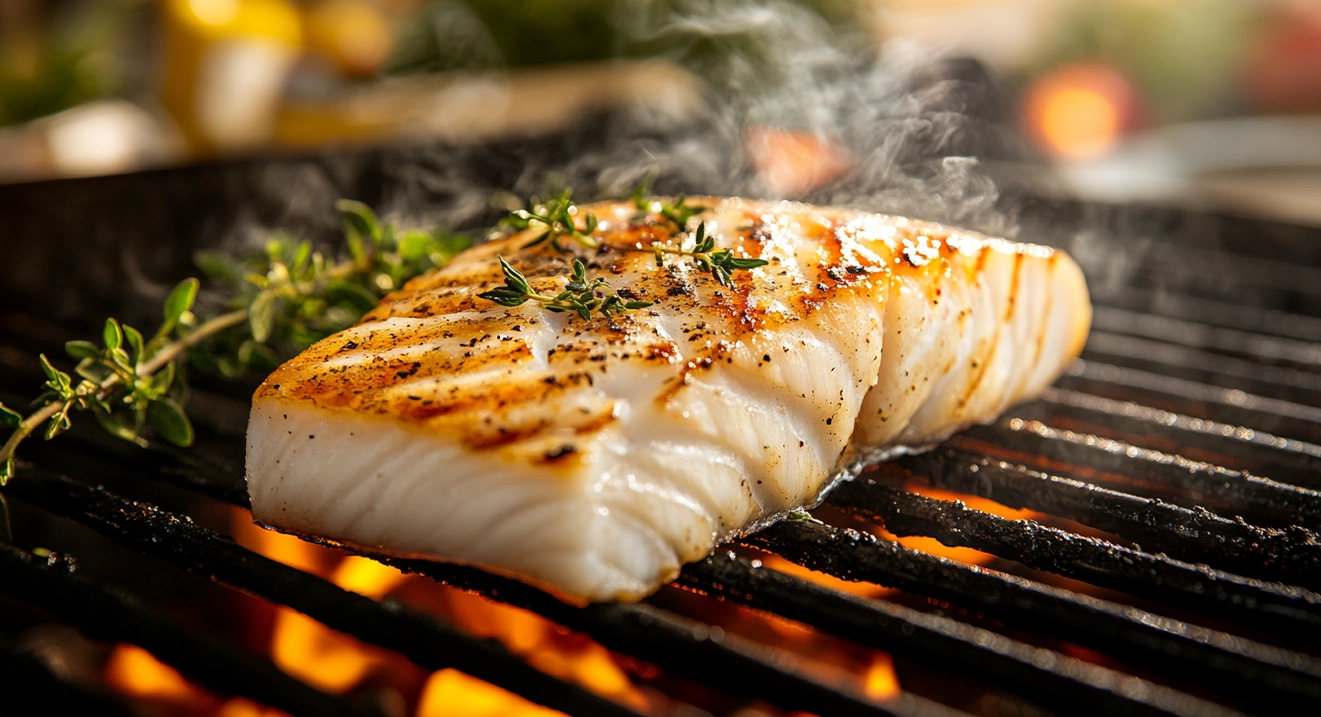
Grilling halibut adds a smoky flavor and beautifully charred marks, enhancing its natural taste.
Steps:
- Preheat the grill to medium-high heat and lightly oil the grates to prevent sticking.
- Brush the halibut with olive oil and season it with salt, pepper, and your favorite seasonings.
- Place the Fish on the grill and cook for 4–5 minutes per side, depending on the thickness.
- Use a spatula to flip the Fish carefully to keep it intact.
For a summery dish, serve grilled halibut with fresh vegetables or a tangy salsa.
Baking Halibut
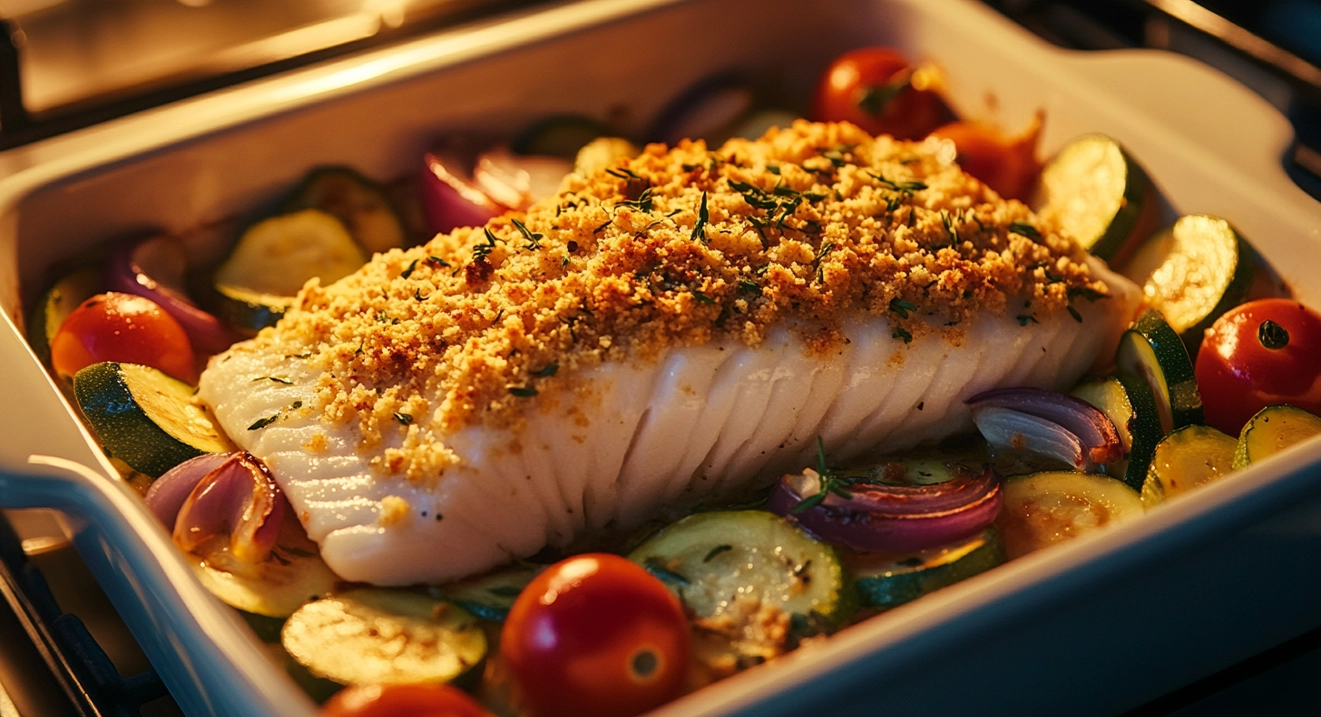
Baking is a foolproof way to cook halibut evenly and retain its moisture. It’s perfect for infusing the Fish with additional flavors.
Steps:
- Preheat the oven to 375°F (190°C).
- Place the halibut in a baking dish and season it with salt, pepper, and herbs. For extra flavor, you can also add slices of lemon, garlic, or a splash of white wine.
- Cover the dish with foil or parchment paper to lock in moisture.
- Bake for 12–15 minutes until the Fish is opaque and flakes easily with a fork.
Baked halibut pairs wonderfully with a creamy sauce or roasted vegetables.
Poaching Halibut
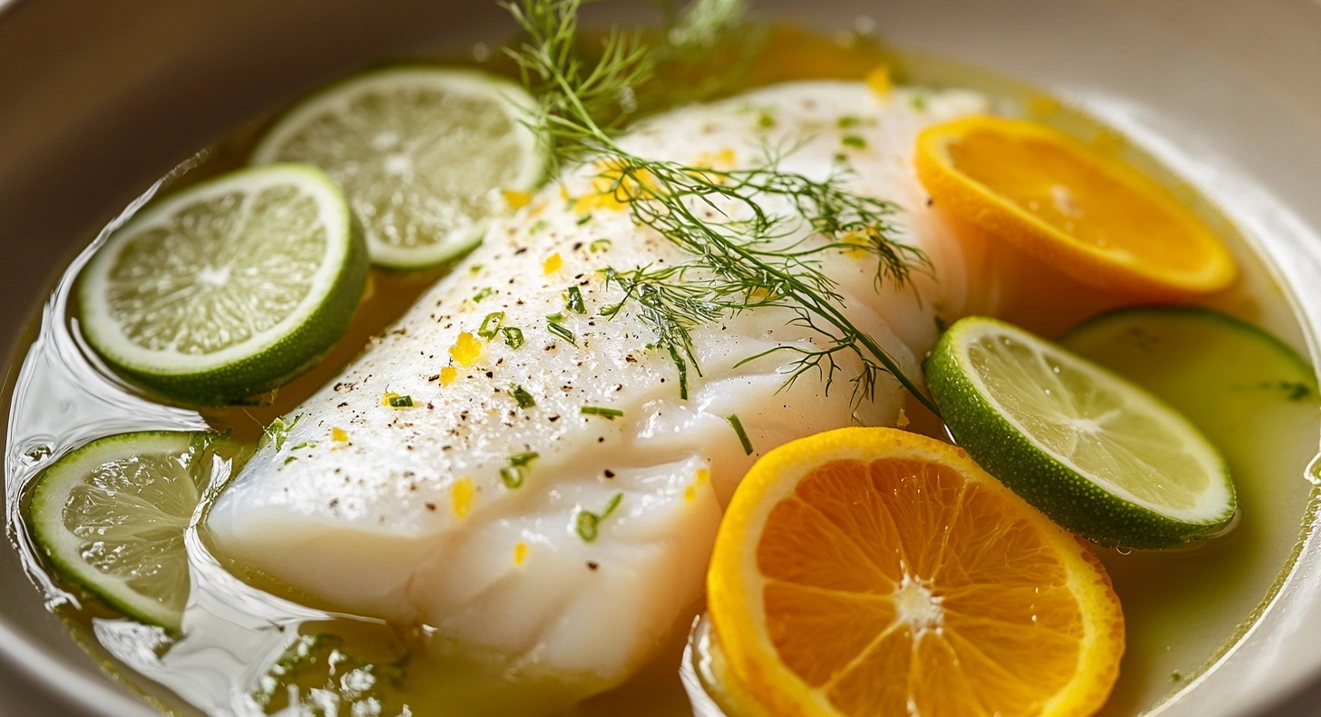
Poaching is a gentle cooking method that keeps halibut moist and enhances its delicate texture.
Steps:
- Prepare a poaching liquid with water, broth, or white wine, and add aromatics like herbs, garlic, or bay leaves.
- Bring the liquid to a gentle simmer in a wide pan.
- Add the halibut fillets and ensure they are fully submerged.
- Poach for 8–10 minutes or until the Fish is cooked.
Poached halibut works well with light sauces, fresh herbs, or over a bed of greens for a healthy meal.
Advantages and Disadvantages of Cooking Methods
When preparing halibut, choosing the proper cooking method can enhance its flavor and texture while accommodating your personal preferences and kitchen setup. Below is an analysis of the advantages and disadvantages of popular halibut cooking methods.
Pan-Searing Pros and Cons
Pros:
- Quick Cooking Time: Pan-searing is one of the fastest ways to prepare halibut, perfect for busy days.
- Crispy Texture: Creates a golden, crisp crust that contrasts beautifully with the tender interior.
- Flavorful: The high heat caramelizes the natural sugars, intensifying the flavor of the Fish.
Cons:
- Risk of Overcooking: This requires attention to avoid drying out the Fish due to high heat.
- Splatter and Cleanup: This can cause oil splatter, leading to more cleanup after cooking.
- Requires Careful Timing: Needs precise timing to achieve the ideal texture.
Grilling Pros and Cons
Pros:
- Smoky Flavor: Imparts a rich, smoky flavor that enhances halibut’s natural taste.
- Beautiful Presentation: Creates attractive grill marks, adding a professional touch.
- Healthy: It requires minimal oil and retains the Fish’s natural nutrients.
Cons:
- Delicate to Handle: Halibut can stick to the grill or fall apart if not handled carefully.
- Weather Dependent: Outdoor grilling may only sometimes be an option.
- Risk of Overcooking: The direct heat can quickly dry out the Fish if not monitored.
Baking Pros and Cons
Pros:
- Even Cooking: Provides a consistent, evenly cooked result.
- Customizable Flavor: Allows for easy infusion of flavors with herbs, spices, and marinades.
- Hands-Off Method: Requires minimal attention, freeing you to prepare side dishes.
Cons:
- Longer Cooking Time: Takes more time compared to pan-searing or grilling.
- No Crispy Texture: The Fish remains moist but lacks the crispiness of searing or grilling.
- Can Be Bland: The Fish may taste plain without proper seasoning or sauce.
Poaching Pros and Cons
Pros:
- Moist and Tender: Retains the Fish’s moisture, producing a delicate and tender texture.
- Low-Fat Cooking: Requires no added fats, making it a healthy preparation method.
- Simple and Reliable: Great for beginners due to its gentle cooking process.
Cons:
- Subtle Flavor: Poaching needs to develop the rich flavors achieved through browning or charring.
- Soft Texture: Lacks the firmness or crispness of other methods, which some people may prefer.
- Requires Attention to Liquid: Maintaining the correct poaching temperature can be tricky.
Preparing Halibut for Cooking
Proper preparation is essential for bringing out halibut flavors and textures. From cleaning and prepping to marinating and seasoning, preparing your Fish ensures a delicious final dish. Here’s a guide to getting your halibut ready for cooking.
Cleaning and Prepping Halibut
Steps for Cleaning:
- Inspect the Fish: Ensure the halibut is fresh by checking for clear eyes, firm flesh, and a mild, ocean-like smell.
- Rinse Under Cold Water: Gently rinse the Fish to remove residual scales, blood, or debris.
- Pat Dry: Use a paper towel to pat the Fish completely dry. This step is crucial for achieving a good sear or adherence to marinades and seasonings.
Steps for Prepping:
- Remove Skin (Optional): If your recipe calls for skinless fillets, use a sharp knife to separate the skin from the flesh carefully.
- Cut into Portions: If the halibut is a large fillet, cut it into even portions to ensure consistent cooking.
- Debone: Run your fingers over the Fish to locate and remove small pin bones with tweezers.
Marinating Tips and Tricks
Marinating halibut is an excellent way to enhance its flavor while keeping it moist during cooking. Since halibut has a mild taste, marinades should complement rather than overpower it.
Tips:
- Use Acid Sparingly: Ingredients like lemon juice, vinegar, or yogurt can tenderize the Fish, but it should not sit for too long (15–20 minutes is sufficient) to prevent it from becoming mushy.
- Incorporate Oil: A small amount of olive oil or another neutral oil helps the marinade coat the Fish evenly and prevents it from drying out.
- Add Flavorful Herbs and Spices: Garlic, dill, parsley, and paprika are popular choices that pair well with halibut.
Example Marinade Recipe:
- Two tablespoons of olive oil
- One tablespoon of lemon juice
- One clove of garlic, minced
- One teaspoon paprika
- One tablespoon chopped fresh dill
- Salt and pepper to taste
Combine ingredients and marinate the halibut for 15–20 minutes before cooking.
Seasoning Ideas
Seasoning halibut is key to enhancing its delicate flavor. Whether you prefer simple salt and pepper or bold spice blends, there are endless ways to add flavor.
Classic Seasonings:
- Salt, pepper, and olive oil for a minimalist approach.
- Lemon zest, garlic, and parsley for a bright, fresh profile.
Herb Blends:
- Mediterranean: Thyme, oregano, rosemary, and a drizzle of olive oil.
- Asian-Inspired: Soy sauce, ginger, sesame oil, and a sprinkle of green onions.
- Cajun: Paprika, cayenne, garlic powder, and thyme for a spicy kick.
Finishing Touches:
- Freshly squeezed lemon or lime juice just before serving.
- A drizzle of melted butter or herb-infused oil for added richness.
Choosing the Right Cooking Method for Halibut
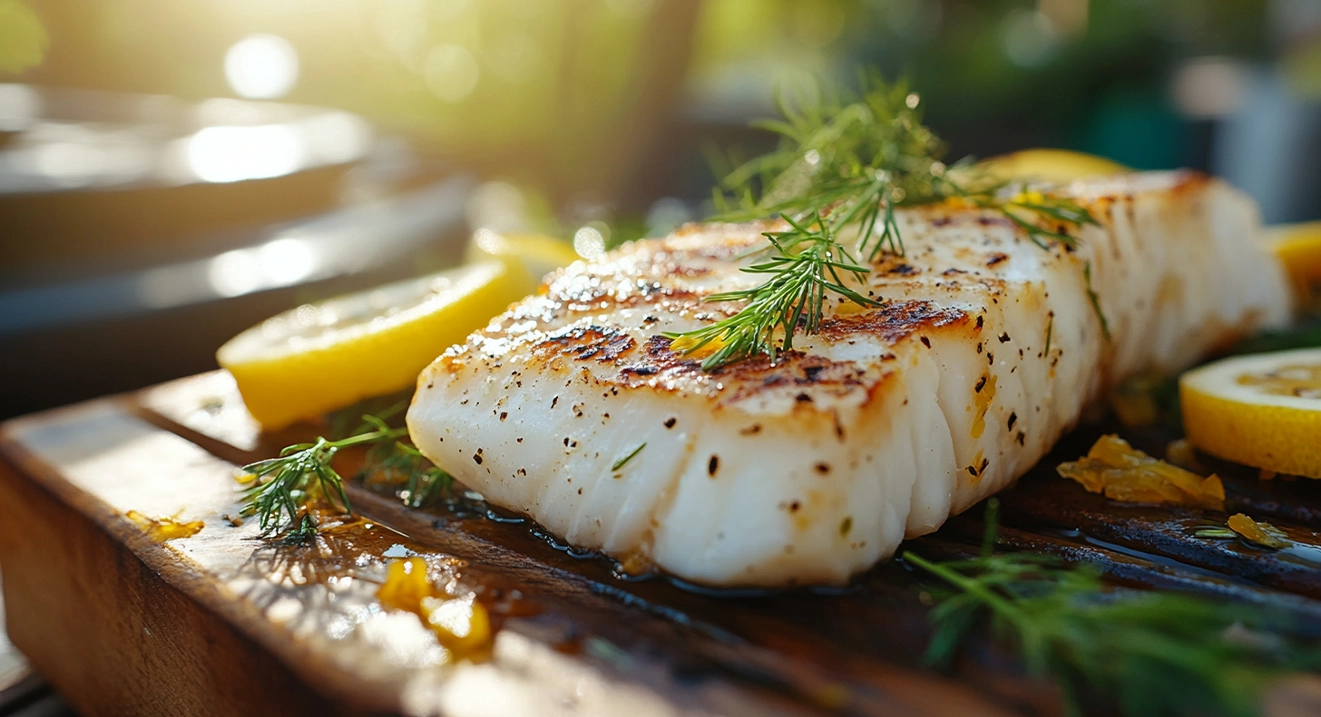
Halibut is a versatile fish that can be prepared using various cooking techniques. Selecting the appropriate method depends on factors like the dish you’re creating, the desired texture, and the available equipment. Here’s a guide to help you decide.
Factors to Consider
1. Thickness of the Fillet:
- Thin fillets cook quickly and are ideal for methods like pan-searing or poaching.
- Thicker fillets or steaks are better suited for grilling or baking, as these methods allow even cooking.
2. Desired Texture and Flavor:
- For a crispy exterior, choose pan-searing or grilling.
- To retain maximum moisture, baking or poaching are excellent options.
- For a smoky flavor, grilling is the top choice.
3. Time and Effort:
- If you need more time, pan-searing offers a quick and flavorful solution.
- Baking and poaching are more hands-off methods, perfect for multitasking.
4. Health Considerations:
- Poaching and baking require little to no added fat, making them healthier options.
- Grilling and pan-searing can involve additional oil but maintain the Fish’s lean profile.
5. Flavor Infusion:
- Baking allows for flavor infusion with herbs, spices, and marinades.
- Poaching in aromatic liquids like broth or wine adds subtle depth to the dish.
Best Cooking Methods for Various Dishes
1. Light and Healthy Dishes:
- Poaching: Perfect for salads or light meals focusing on tender, moist Fish.
- Baking: Great for serving with roasted vegetables or a light vinaigrette.
2. Crispy and Flavorful Dishes:
- Pan-searing is ideal for dishes where a golden crust enhances the Fish, such as halibut topped with a lemon-butter sauce or served over rice.
- Grilling: Adds a smoky, charred flavor that pairs well with bold sides like grilled vegetables or spicy salsas.
3. Elegant and Infused Dishes:
- Baking: Works well with layered flavors, such as baking halibut with a herb crust or in a white wine and garlic sauce.
- Poaching: Suitable for pairing with delicate sauces like beurre blanc or a light citrus reduction.
4. Quick and Casual Meals:
- Pan-Searing: Ideal for quick weeknight meals, served with steamed vegetables or a simple salad.
- Grilling: Great for summer gatherings and casual dining with friends.
Expert Tips for Cooking Halibut Perfectly
Cooking halibut requires precision to remain moist, tender, and flavorful. Overcooking can lead to a dry, harsh texture, while undercooking may make the Fish unsafe to eat. Here are expert tips to help you achieve perfect results.
How to Avoid Overcooking Halibut
- Monitor Closely: Halibut cooks quickly, so stay attentive to avoid overcooking. Use a timer to keep track of the cooking time.
- Use High Heat Strategically: For methods like pan-searing or grilling, start with high heat to create a crust, then lower the heat to finish cooking gently.
- Check for Doneness Early: Halibut is done when it turns opaque and flakes easily with a fork. Avoid waiting for it to feel firm, as this often means it’s overcooked.
- Rest the Fish: Remove the halibut from the heat slightly before fully cooking it. The residual heat will continue to cook it to perfection.
Perfect Timing for Cooking Halibut
Cooking time for halibut depends on the method and thickness of the fillet. A general rule of thumb is to cook Fish for 8–10 minutes per inch of thickness, flipping halfway through if applicable.
Cooking Times by Method:
- Pan-Searing: 3–4 minutes per side for a 1-inch fillet.
- Grilling: 4–5 minutes per side for a 1-inch fillet.
- Baking: 12–15 minutes in a preheated 375°F (190°C) oven.
- Poaching: 8–10 minutes in gently simmering liquid.
Ideal Cooking Temperatures
Using the correct temperature ensures that your halibut is both safe and delicious.
- Internal Temperature for Doneness:
- For a moist and tender texture, halibut should be cooked to an internal temperature of 130–135°F (54–57°C). Use a meat thermometer to check the thickest part of the Fish.
- Oven Temperature for Baking:
- Bake halibut at 375–400°F (190–200°C) for even cooking.
- Grill Temperature:
- Preheat the grill to medium-high heat (375–450°F/190–230°C) for the best results.
- Poaching Temperature:
- Keep the poaching liquid at a gentle simmer, around 160–180°F (70–82°C). Avoid boiling, as it can toughen the Fish.
Additional Tips:
- Invest in a Thermometer: A digital meat thermometer ensures precision and prevents guesswork.
- Use a Light Touch: Halibut is delicate; handle it gently when flipping or transferring to avoid breaking the fillet.
- Consider the Residual Heat: Removing the Fish from heat slightly early prevents overcooking during resting.
Frequently Asked Questions (FAQs) About Cooking Halibut
How is halibut supposed to be cooked?
Halibut is a versatile fish that can be cooked using various methods, including pan-searing, grilling, baking, or poaching. The key is cooking until it becomes opaque and flakes easily with a fork. The internal temperature should reach 130–135°F (54–57°C) for optimal texture and flavor. Halibut should be moist and tender, not overcooked, as it can dry out quickly due to its lean nature.
Is halibut better baked or pan-seared?
Both methods are excellent, and the choice depends on your desired texture and flavor:
- Baking is ideal for moist and evenly cooked halibut, especially when combined with herbs, spices, or sauces. It’s a hands-off method, perfect for infusing flavors into the Fish.
- Pan-searing creates a golden, crispy crust on the outside while keeping the inside tender. It’s a quick, flavorful dish and works well with simple seasonings.
Pan-searing is the better option for a crisp exterior and a faster cooking time. Baking is preferred for a more infused and tender result.
How do you cook halibut so it is not dry?
To keep halibut from drying out:
- Do not overcook: Halibut cooks quickly, so monitor it closely and remove it from heat when it reaches 130–135°F (54–57°C).
- Moisture Retention: Use marinades or cover the Fish with foil while baking to lock in moisture.
- Cook Gently: Avoid high heat for prolonged periods. Methods like poaching or baking at moderate temperatures help retain moisture.
- Rest After Cooking: Let the Fish rest for a minute or two after cooking to allow juices to redistribute.
Can halibut be eaten medium rare?
Yes, halibut can be eaten in medium rare, but it must be fresh and high-quality. Medium-rare halibut has a slightly translucent center and is tender and moist. The internal temperature for medium-rare halibut should be around 120–125°F (49–52°C). However, most guidelines recommend cooking halibut to at least 130°F (54°C) for food safety reasons. If you serve it medium rare, ensure the Fish is sourced from a trusted supplier.
Conclusion
Ideally, Cooking halibut requires attention to detail, but with the proper techniques, you can create a moist, tender, and flavorful dish. Here are the key takeaways for achieving the best results:
- Choose the Right Cooking Method: Pan-searing and grilling are excellent for adding texture and flavor while baking and poaching are ideal for moist, evenly cooked results.
- Prepare the Fish Properly: Start with fresh, high-quality halibut. Clean, dry, and season it well to enhance its natural flavors.
- Monitor Cooking Time: Halibut cooks quickly, so follow the general rule of 8–10 minutes per inch of thickness and use a timer to avoid overcooking.
- Use the Correct Temperature: Aim for an internal temperature of 130–135°F (54–57°C) for perfectly cooked opaque halibut flakes easily.
- Incorporate Moisture-Retaining Techniques: Marinating, baking with foil, or poaching can help lock in moisture and prevent dryness.
- Experiment with Flavors: Halibut’s mild taste makes it a versatile canvas for various seasonings, marinades, and sauces, allowing you to create dishes that suit your preferences.
